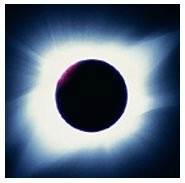Earth's Axis + How sunlight hits Earth
Solstices
Equinoxes
Science Department (Archmere)
Solar Eclipse
100
True or False: The Axis is tilted.
True
100
True or False: The spring solstice happens on March 21st
False
100
True or False: The noon sun is directly over the equator during an equinox
True
100
How many teachers do we have in the science department?
What is eight (8)
100
What type of moon causes a solar eclipse?
What is a New moon
200
Where does sunlight hit most directly?
Near the equator
200
How many times a year does a solstice happen.
Twice a year
200
What seasons do the equinoxes happen
Fall and Spring
200
What room number are we in the science building?
What is Rm S12.
200
It is called a what when the moon completely blocks the sun
What is a total solar eclipse
300
The Earth has seasons because...
Earth's axis is tilted
300
What days are the summer and winter solstices.
June 21st and December 21st
300
What days do the equinoxes happen.
Around March 21st and September 22nd
300
The science building is named after?
What is JDSC?
300
During a solar eclipse ____ is blocked by _____
What is the sun and the moon
400
Earth's Axis is straight up and down what would happen.
There would be no seasons
400
On the June solstice in which hemisphere is it the longest day? Shortest day?
Northern hemisphere has the longest. Southern has the shortest.
400
True or false: The axis is straight up and down during an equinox.
False
400
What is Mr. Okocha's first name?
What is Fred.
400
You would see a partial solar eclipse if you were within the moon's umbra true or false
What is false
500
How far tilted is the Axis from the vertical.
23.5 degrees
500
On the winter solstice which hemisphere is closest to the sun.
Southern hemisphere
500
During an equinox which hemisphere is closest to the sun?
Neither
500
How many science labs are there in the science building?
What is seven (7)
500
What is this a picture of?

A) A total solar eclipse
B) A total lunar eclipse
C) A full moon
What is a total solar eclipse.